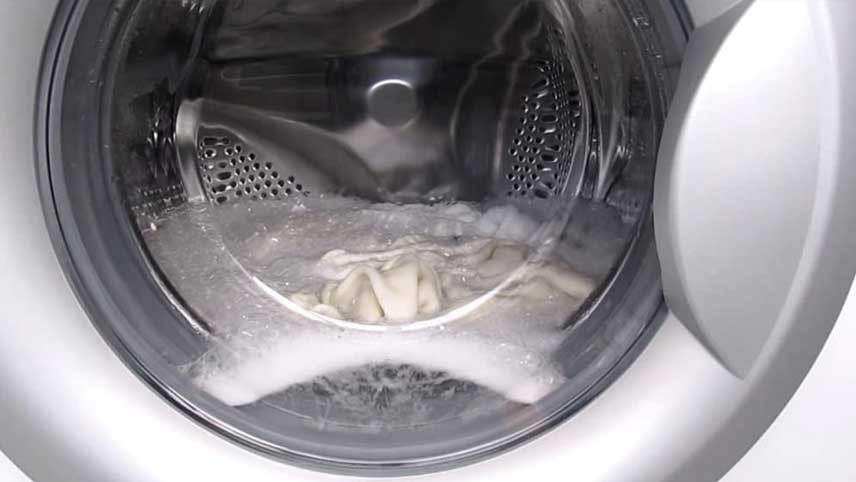
Washing machine breakdowns often occur right during washing. As a result, the washing machine freezes things "sour" in soapy water. What to do?
Don't panic there are several ways to forcefully drain water from the machine. We'll tell you about these life hacks below.
5 Ways to Drain Water from a Washing Machine
For your safety, before you start draining the water from the washing machine, you must disconnect it from the power supply (pull the plug out of the socket). Also, be sure to prepare a container for draining the water and a highly absorbent cloth in case water gets on the floor.
Method 1: Through the emergency drain hose
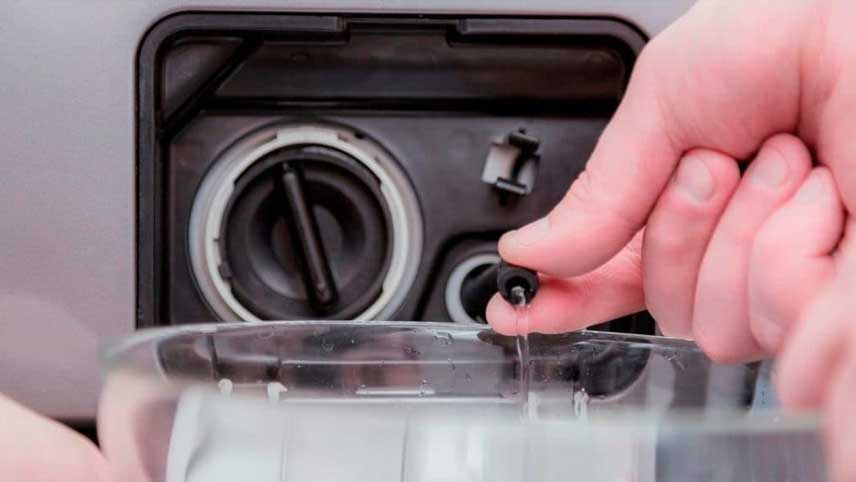
Some modern washing machines, usually in the mid- to high-end price segment, have a special emergency drain hose. It is located next to the pump drain filter.
If your washing machine has an emergency drain hose, you need to open the decorative hatch at the front of the machine, pull out the water drain hose, lower the end into the prepared container and remove the plug from the hose. Water will start draining from the tank.
Pros and cons
The method is very simple, but quite long: due to the small diameter of the hose, it takes quite a long time to drain the water. And, as we have already said earlier, not all washing machines have an emergency drain hose.
The second method: through the standard drain hose
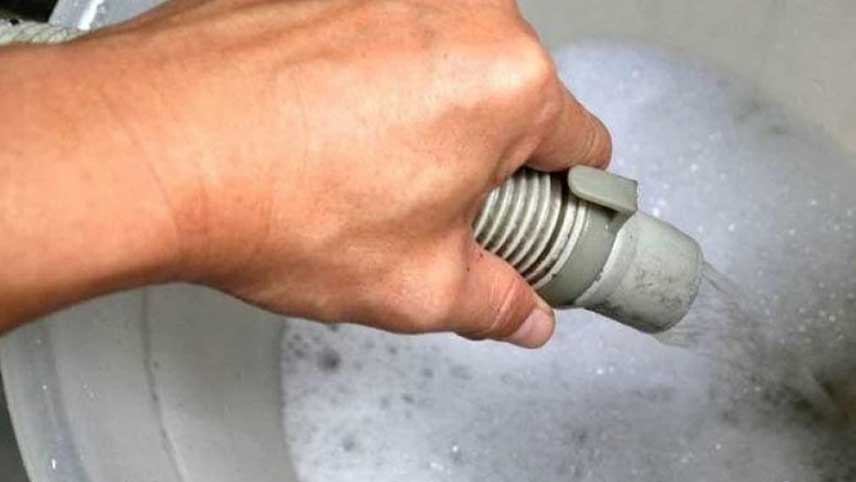
Most washing machine models can be drained manually using their regular drain hose. To do this, disconnect the hose from the back of the machine and the drain. Then place it below the tank along its entire length. Lower the free end into a container (it is best if it is low, like a basin). The water will flow by gravity.
Pros and cons
The best way to drain water from a non-working washing machine. Using the standard drain hose, you can simply, quickly and conveniently drain almost all the water from the drum.
On the downside, this method is not always suitable for "Germans". In some models of Bosch, Siemens, Neff washing machines, the drain hose inside the case makes a loop (it is needed to prevent accidental draining of water when the washing machine is running), so it will not be possible to remove water from them in the above-described way. Or you will need to disassemble the case.
The third way: through the drain filter
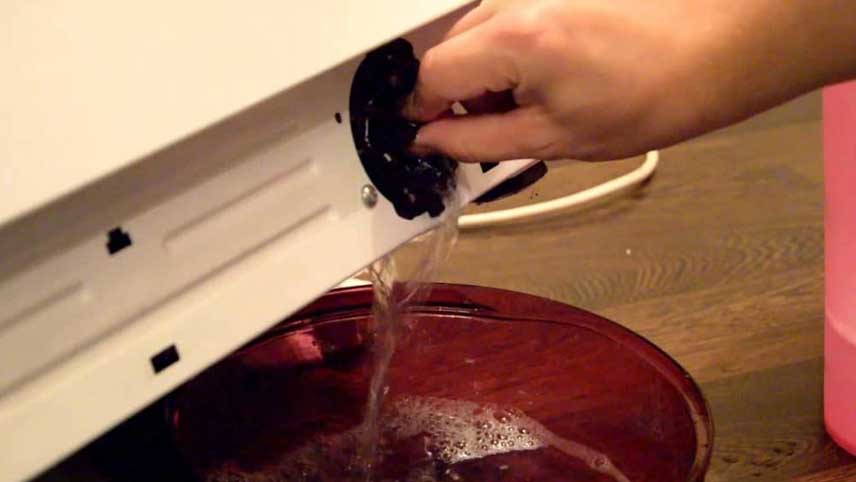
Almost all brands and models of washing machines have a drain filter: it is located in front of the drain pump. The filter holds threads and other debris from the tank so that it does not get into the drain pump and disable it. Access to the drain filter is organized through a panel or a special hatch, which is located in the front at the bottom of the washing machine.
To quickly drain water through the filter, you need to open the hatch and tilt the washing machine slightly on its side or back. It is best to lean it against the wall and place a water container under the edge. Next, you need to put a rag or towel under the container. Now you can unscrew the filter: take it by the handle and turn it counterclockwise, water will flow out of it. It is not necessary to completely unscrew the filter, the water will drain anyway.
After draining the water, you can take out the filter, inspect it and clean it if necessary. Perhaps your machine did not drain the water because the filter was clogged.
Pros and cons
The method is simple and does not require disassembling the machine, but almost always when draining through the filter, some of the water ends up on the floor.
Method 4: Open the hatch and scoop out the water manually
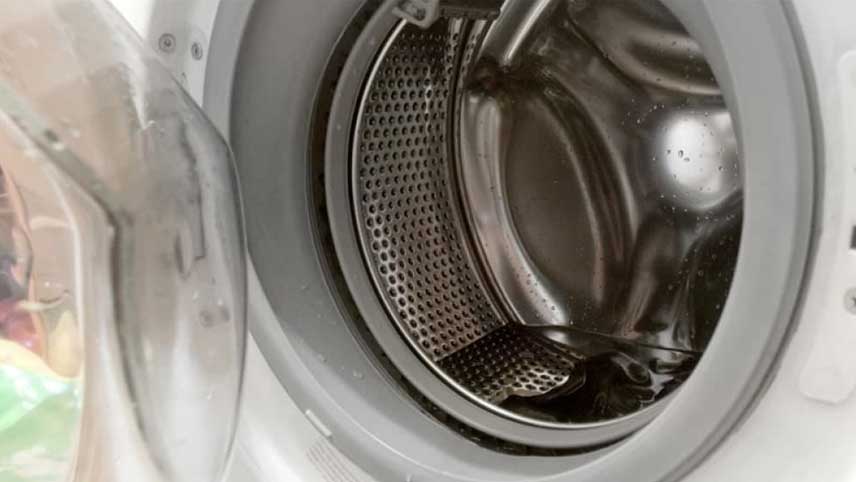
If it is not possible to move the machine to disconnect the drain hose or tilt it to drain through the filter, it is possible to remove the water through the hatch. Sometimes washing machines remove the lock from the door: then you can open the hatch as usual.
From the experience of the masters! Please note that if the water level in the machine is higher than the lower edge of the hatch, you must first tilt the washing machine back. Otherwise, after opening the door, water will gush onto the floor.
To remove water, simply open the hatch and scoop it out using a mug or other container.
Pros and cons
The method is quite long and labour-intensive. If you plan to use it, it will be more convenient to place a basin or bucket next to the washing machine and pour water with a mug into this container.
This method does not allow you to drain all the water from the washing machine, some of it will still remain at the bottom of the tank. In addition, when the machine breaks down, the door is often locked, and before you start removing water from the washing machine, you need to unlock the hatch.
Method five: through the drain pipe
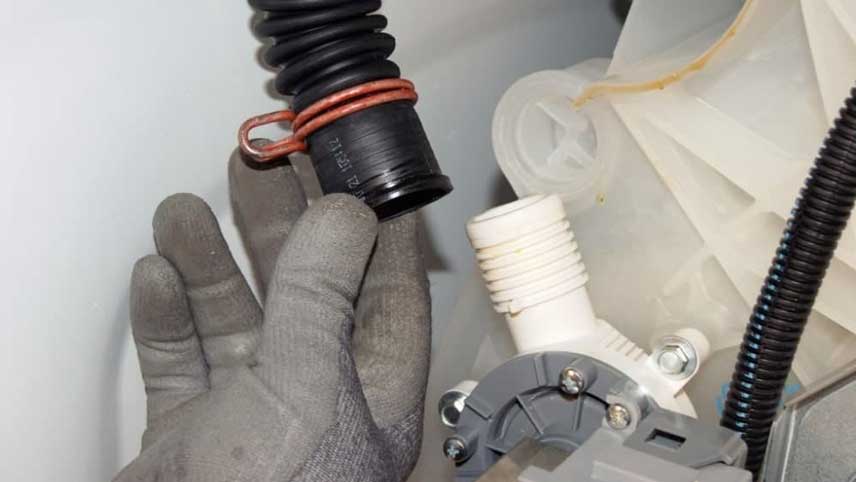
If none of the four methods described above worked, most likely the drain pipe is clogged (otherwise you would be able to drain the water through the drain filter). The machine will need to be disassembled.
The method of forced drainage of water through a branch pipe is technically complex, but allows you to drain all the water: it is suitable even if you leave the washing machine for the winter at the dacha and it is important that there is no liquid left in it.
The procedure for draining water is as follows:
- You need to remove the back panel of the washing machine and find the pipe - usually this is a black rubber corrugated tube that is located under the tank.
- Lay down some dry rags and place a suitable container under the pipe: the water will flow actively.
- Remove the clamp that secures the connection of the pipe to the drain pump. Water will flow.
- If there is no water, the pipe is clogged: carefully insert your finger or a small stick into it to clear the blockage.
- After the water stops flowing, put the pipe back in place, secure the clamp, and screw on the back wall of the washing machine.
Pros and cons
Draining through a branch pipe is an extreme option when other methods of draining water from a broken washing machine do not work, since it is very labour-intensive and almost always leads to a small “flood”: it is almost impossible to drain the water evenly into the container due to the force of the flow.
One of the advantages is that it allows you to completely drain the water from the machine, and it can also be used to immediately remove a blockage in the pipe if this is the reason for problems with drainage.
Breakdowns in which the washing machine does not drain water
After the water has been drained from the machine, it is worth figuring out what exactly happened. Here are the reasons why the washing machine may not drain:
- Drain pump failure. The impeller blades break off or the pump motor burns out. The pump needs to be replaced.
- Blockage in the drain line. Occurs in the drain pipe, filter, pump or drain hose. It is necessary to find the blockage and eliminate it.
- Pressure switch malfunction. This is a sensor that determines the water level in the tank. If it is stuck in the "empty tank" position, the water will not drain. To fix the malfunction, you need to check the pressure switch hose, it may have come off or been damaged (frayed by vibrations). In the first case, you need to put the pressure switch tube on the sensor, in the second case, replace the hose. If the sensor is stuck in the "empty tank" position, the pressure switch must be replaced completely.
- Control board failure. Damage occurs in the drain pump circuit. The control triac often burns out, but other elements may also fail. The control module needs to be repaired or replaced.
For more information on the reasons why a washing machine does not drain water and what you can do yourself, read the article “7 Reasons Why Water Does Not Drain from a Washing Machine”.
If your washing machine has stopped with water and you can't drain it yourself, contact the specialists of the mobile service "Repair City". We arrive quickly, on the day of the call, so that the things in the drum will not have time to sour!
The technician will drain the water, diagnose the washing machine and determine the exact reason why there is no drain. After that, with your consent, he will carry out repairs. We repair equipment at home; you do not need to take the washing machine anywhere. We provide a guarantee for work and replaced parts for up to 3 months .



